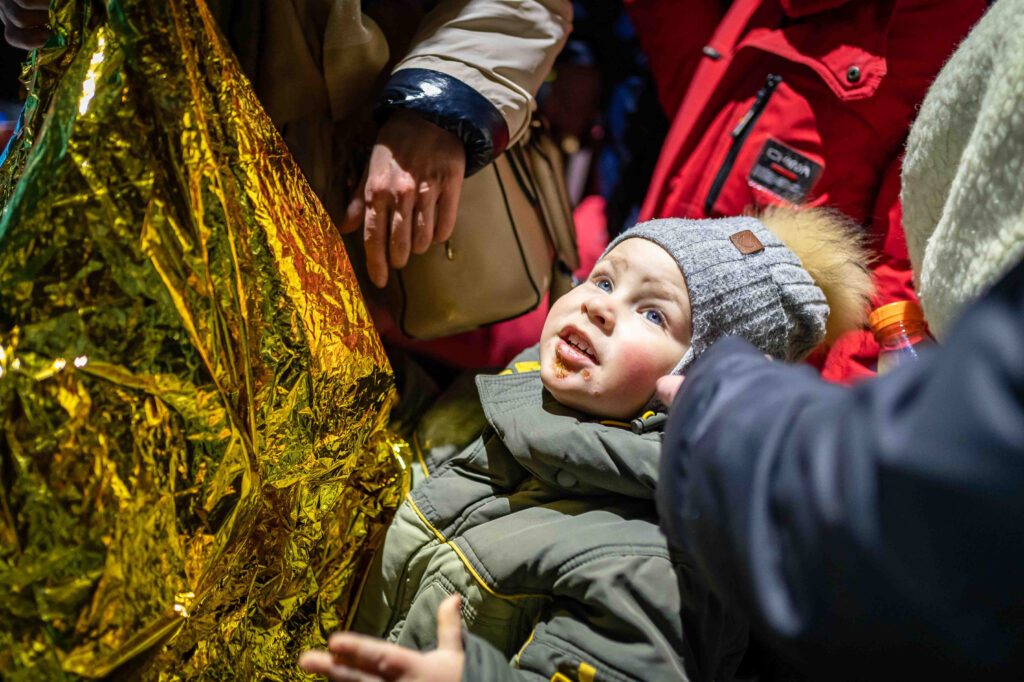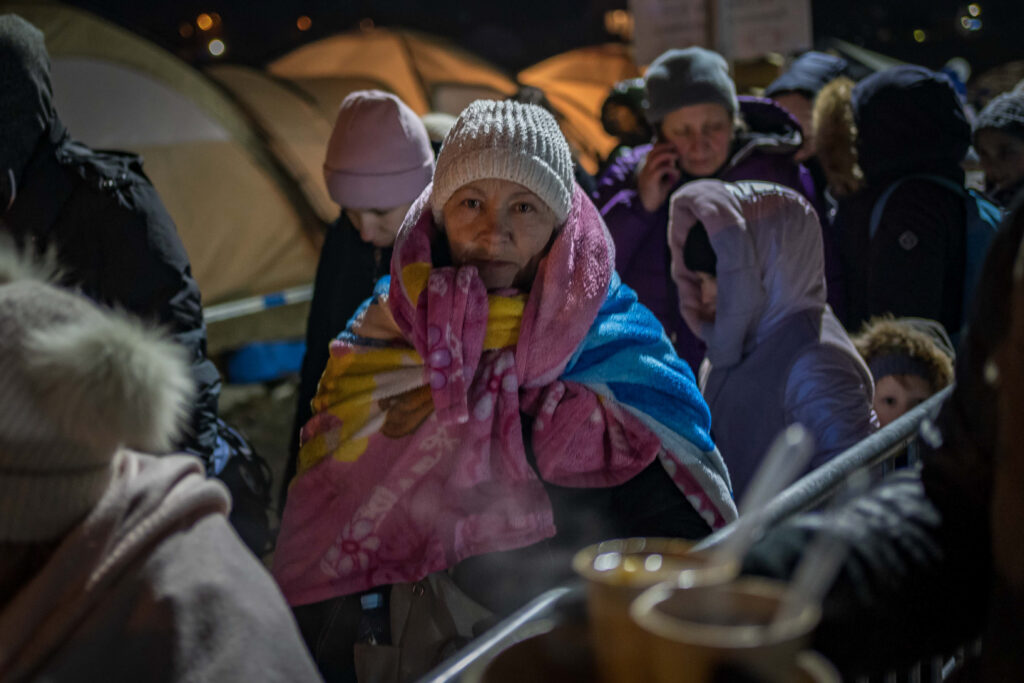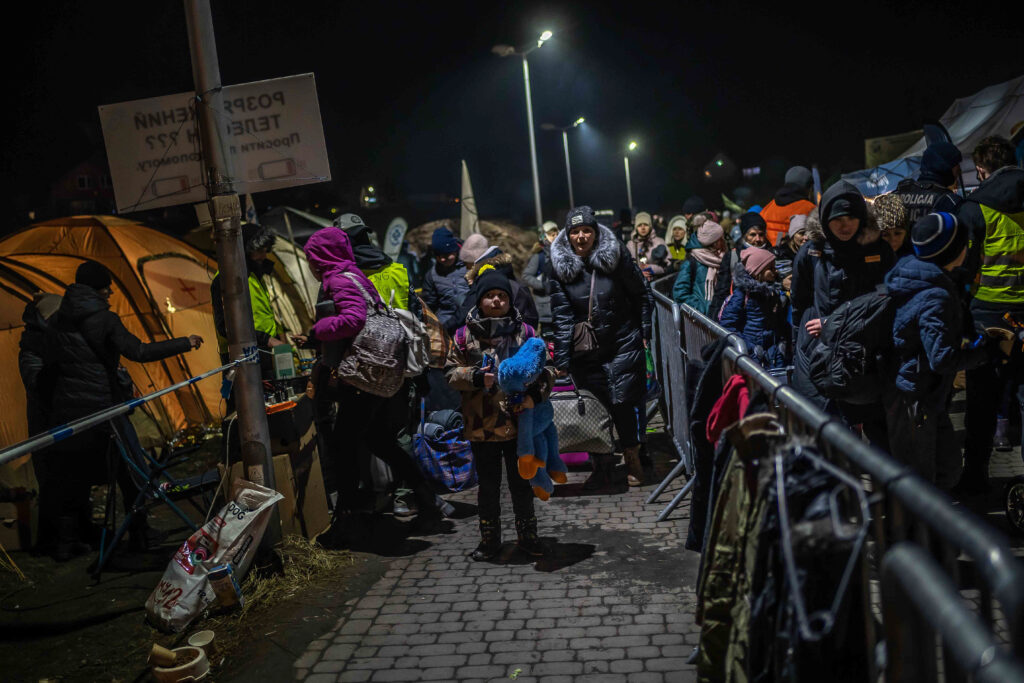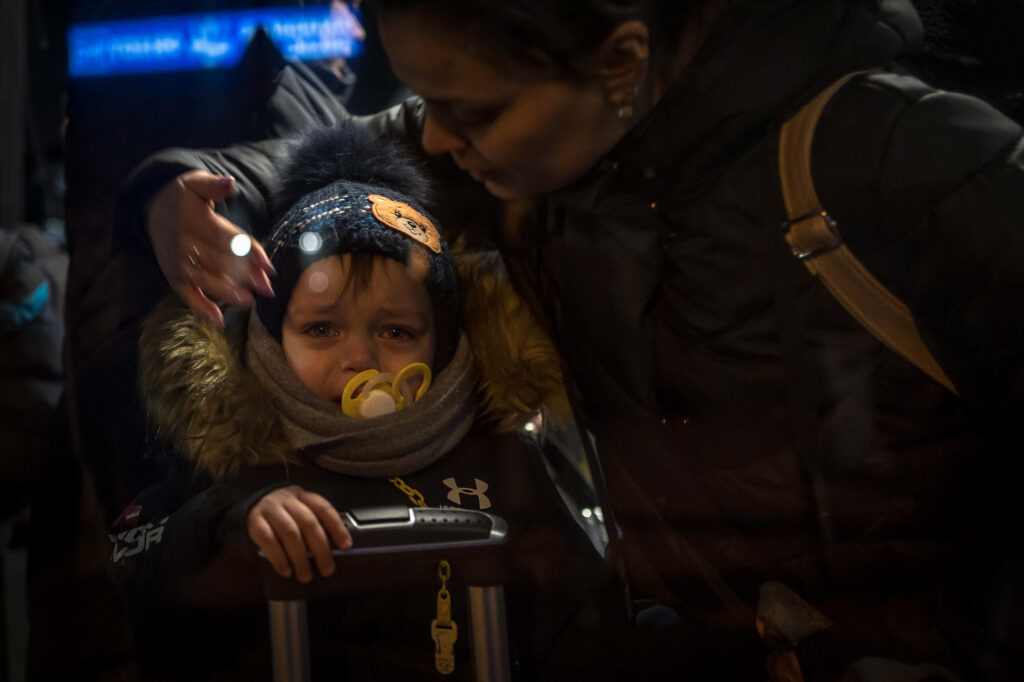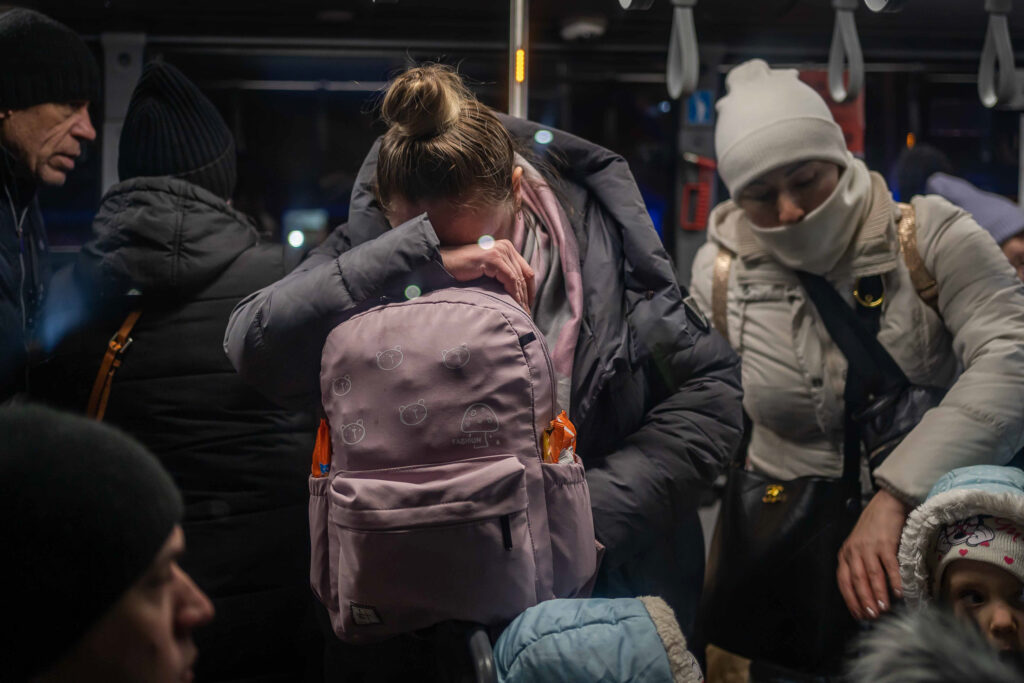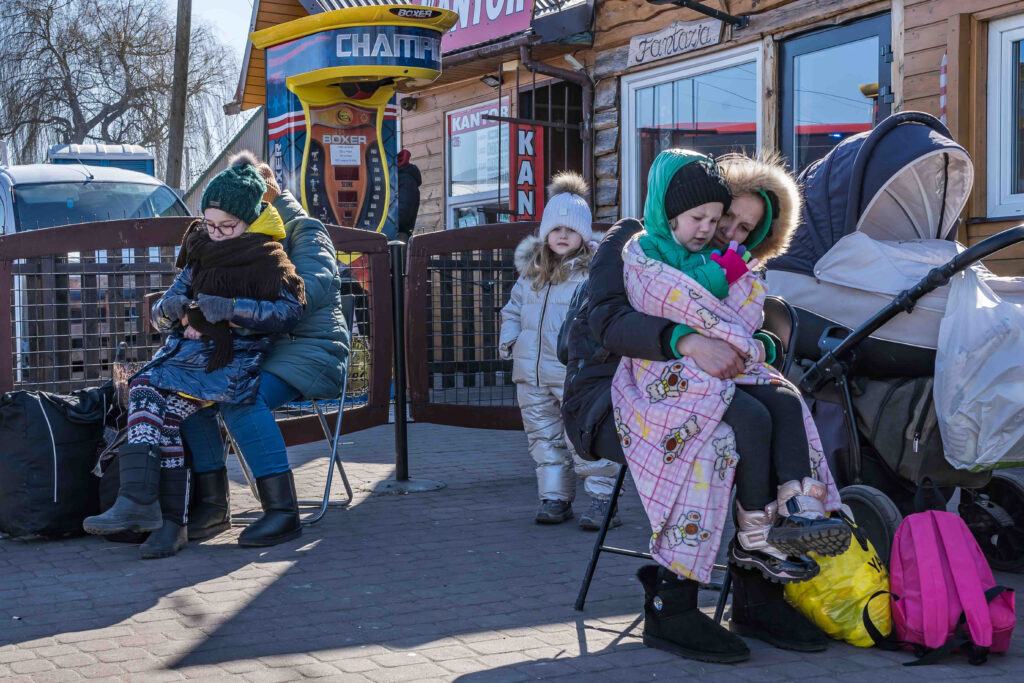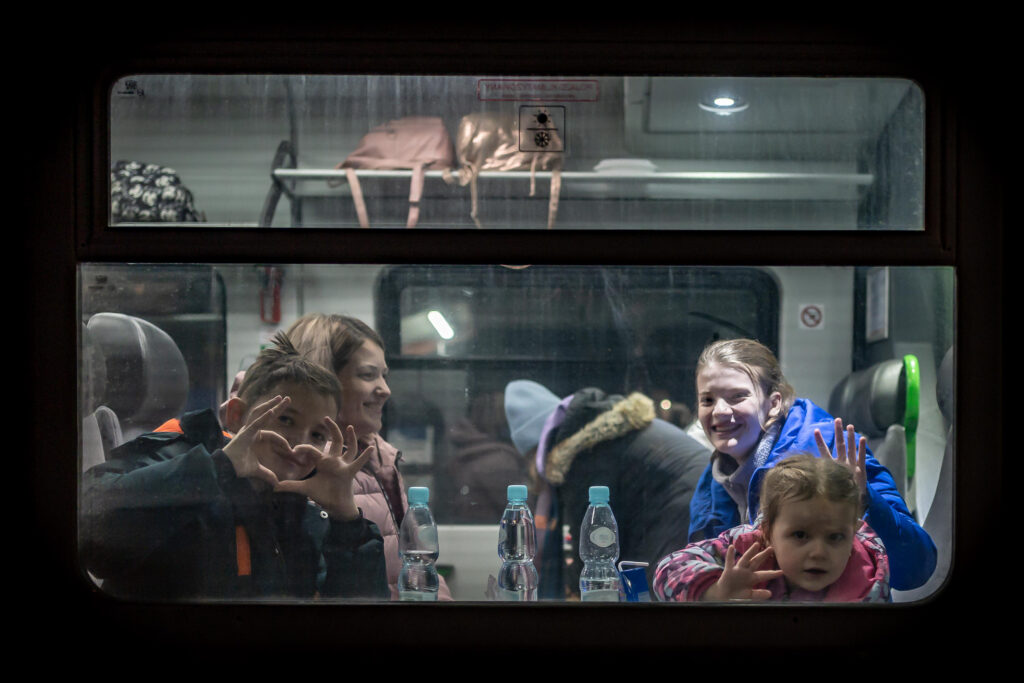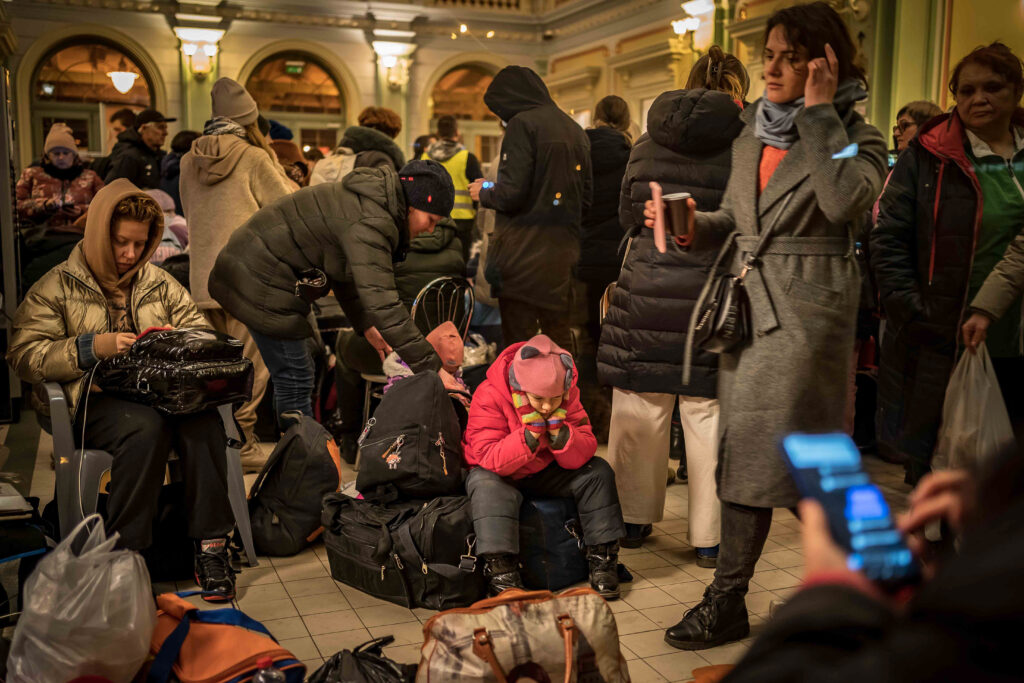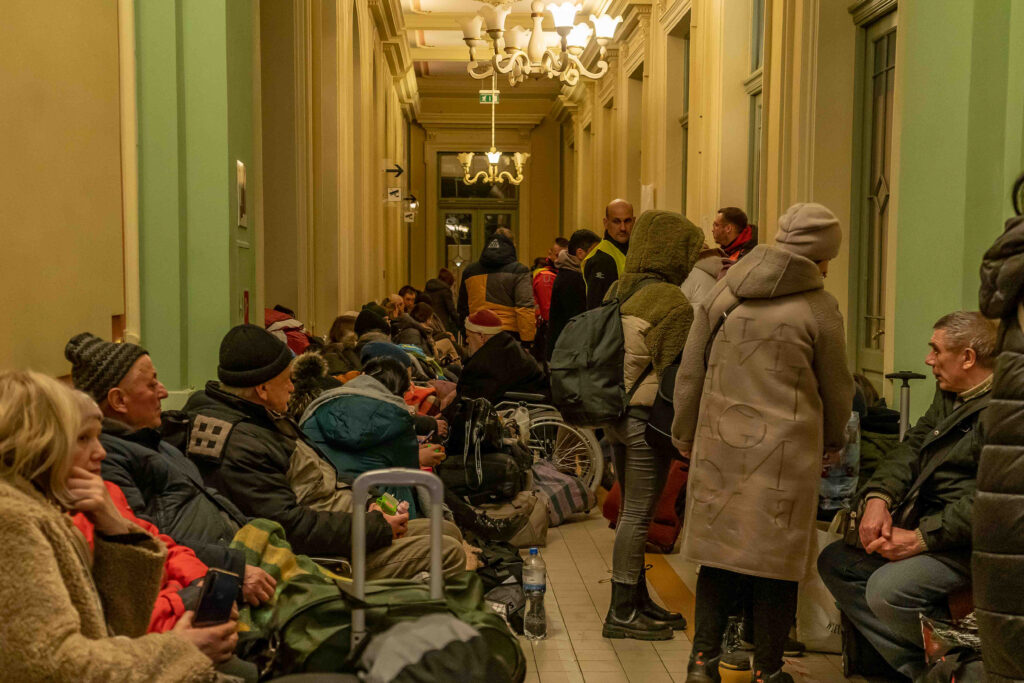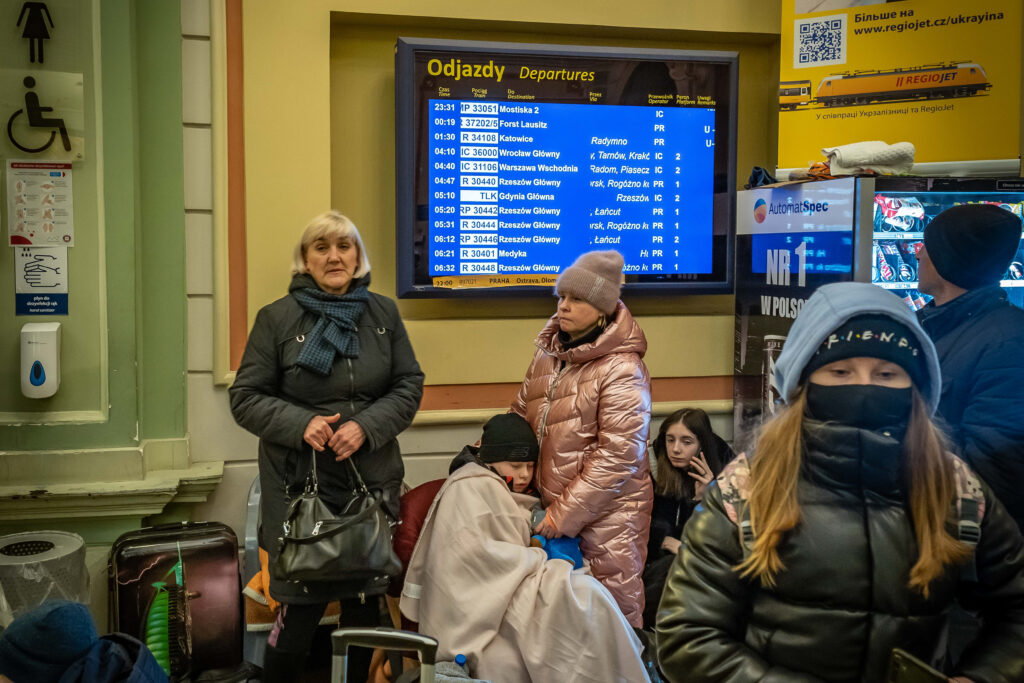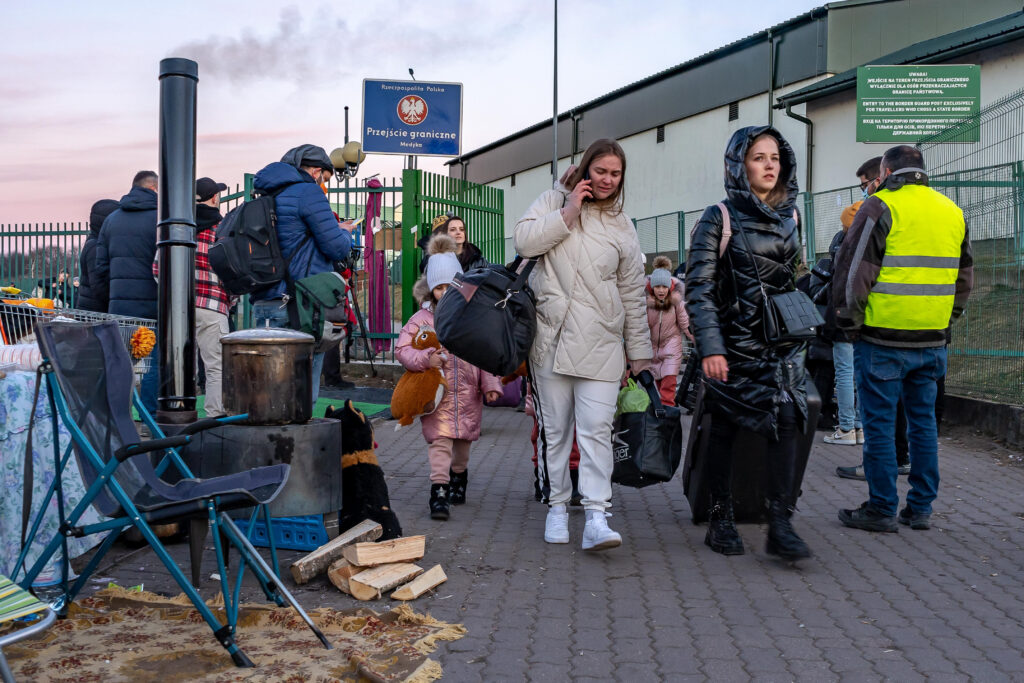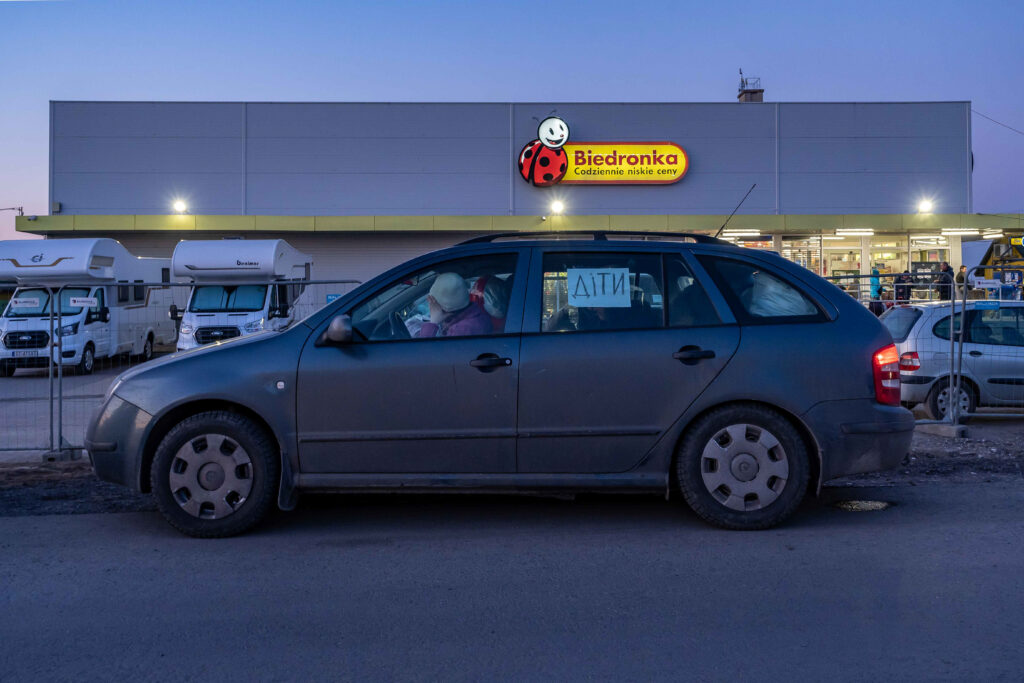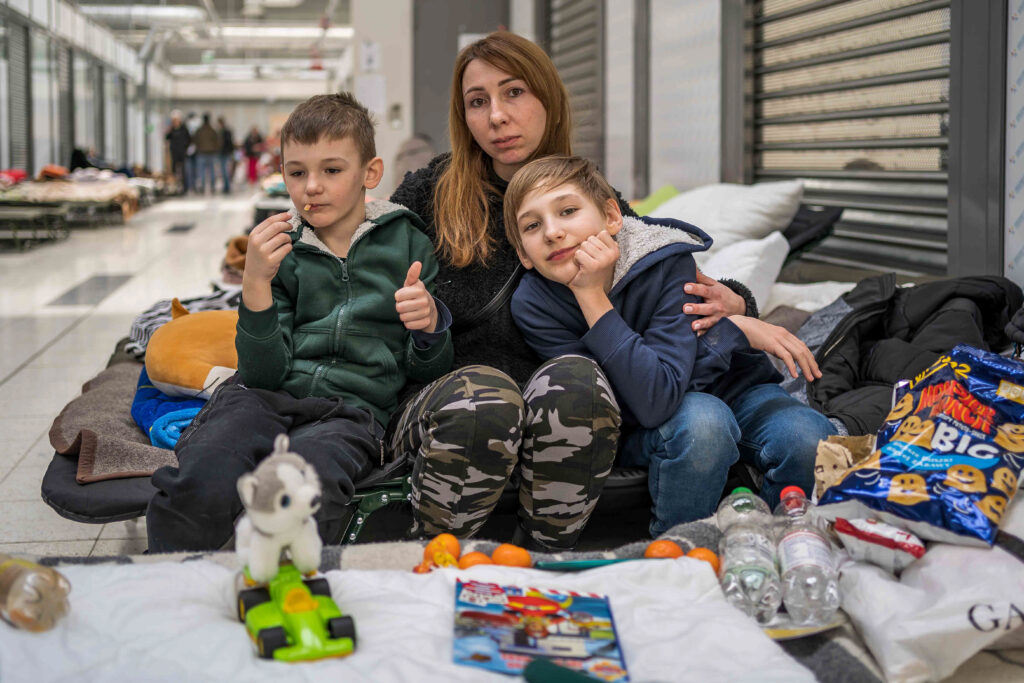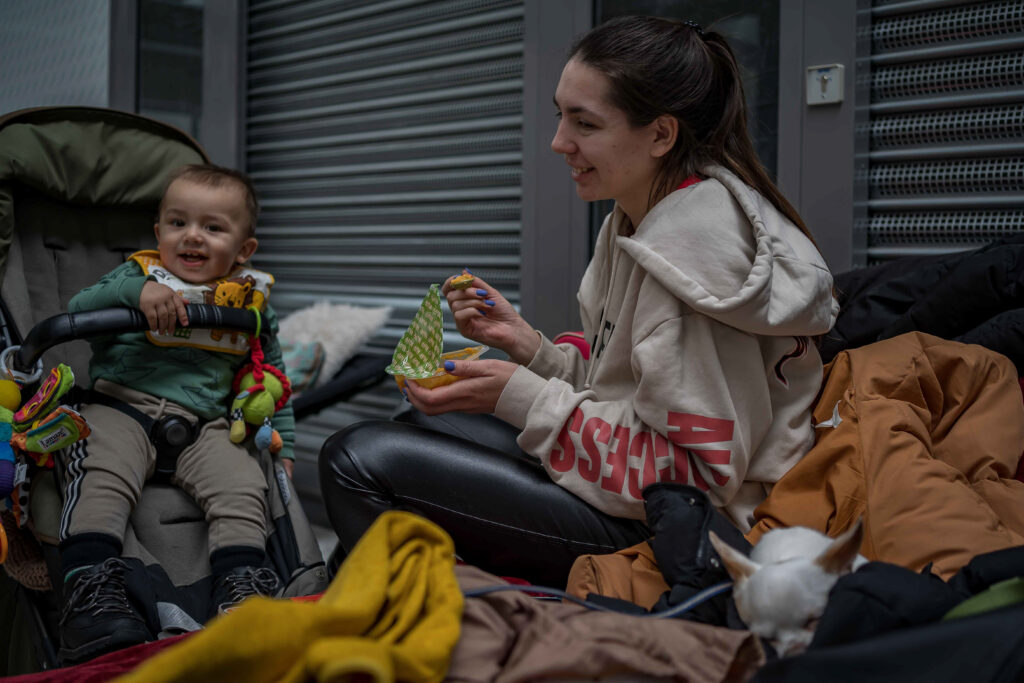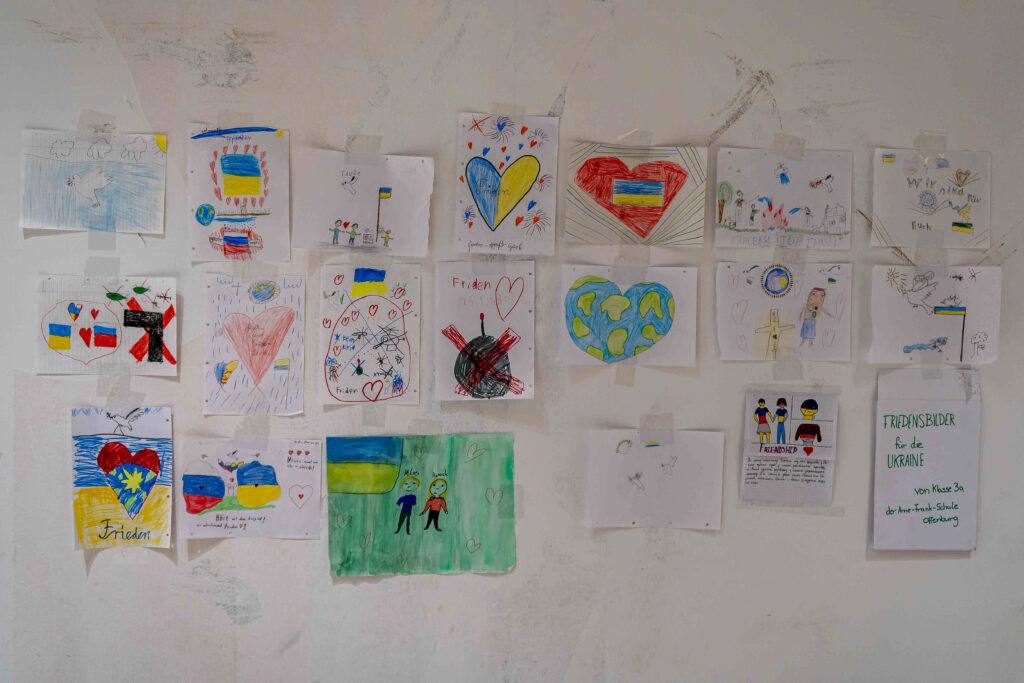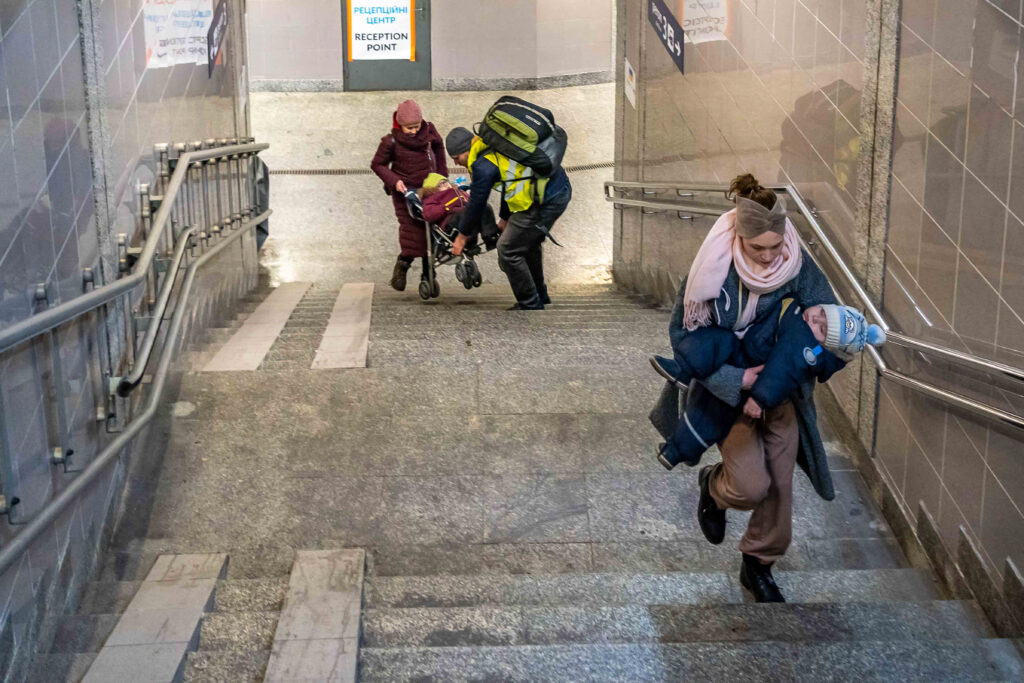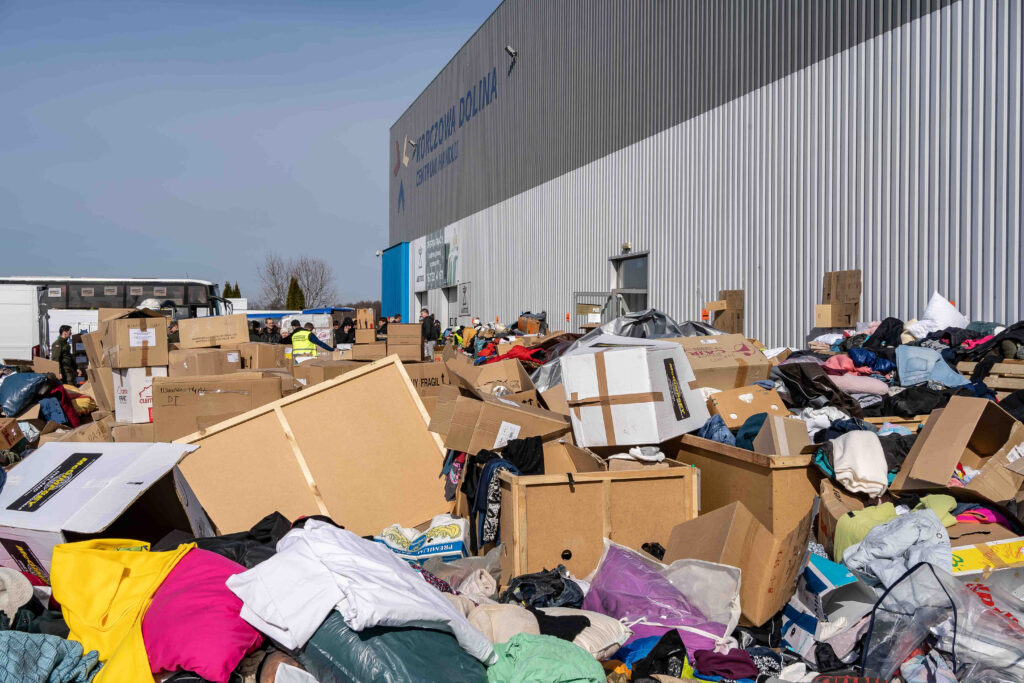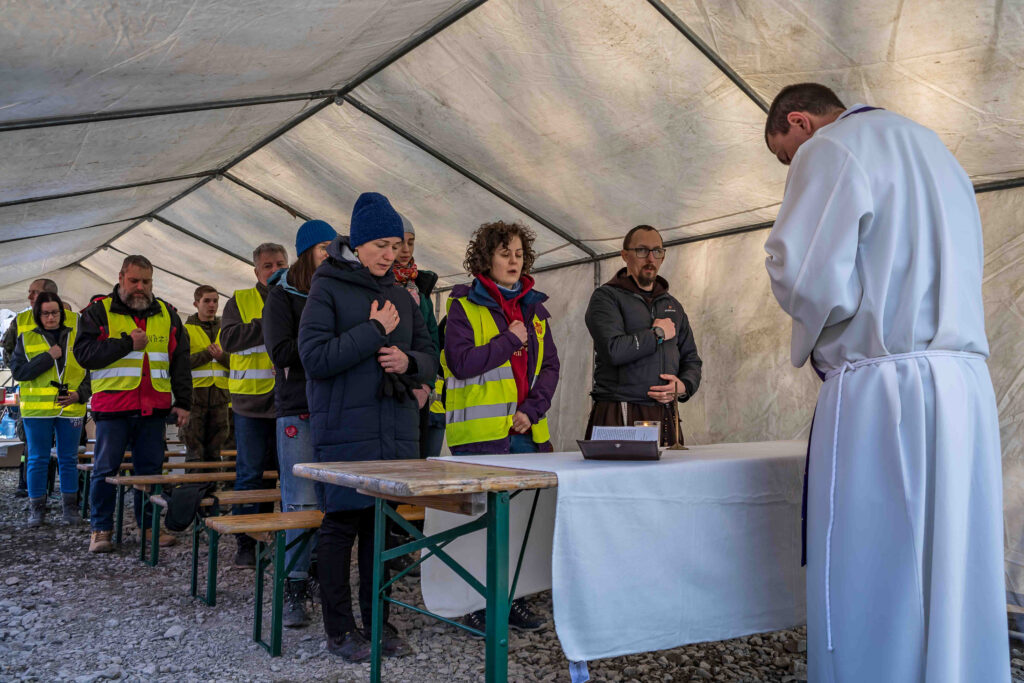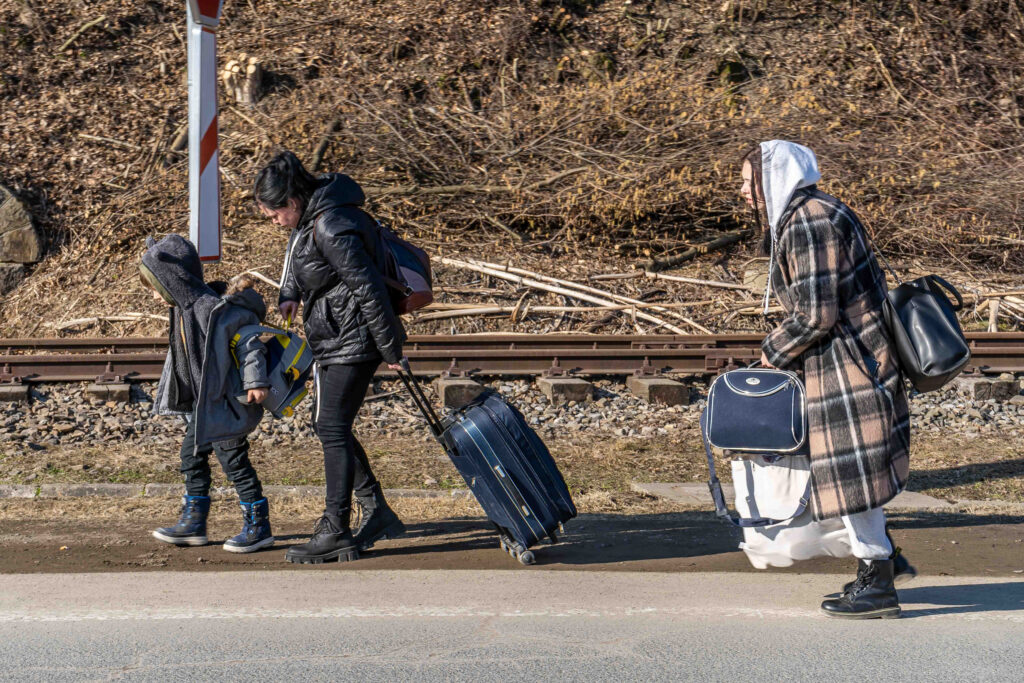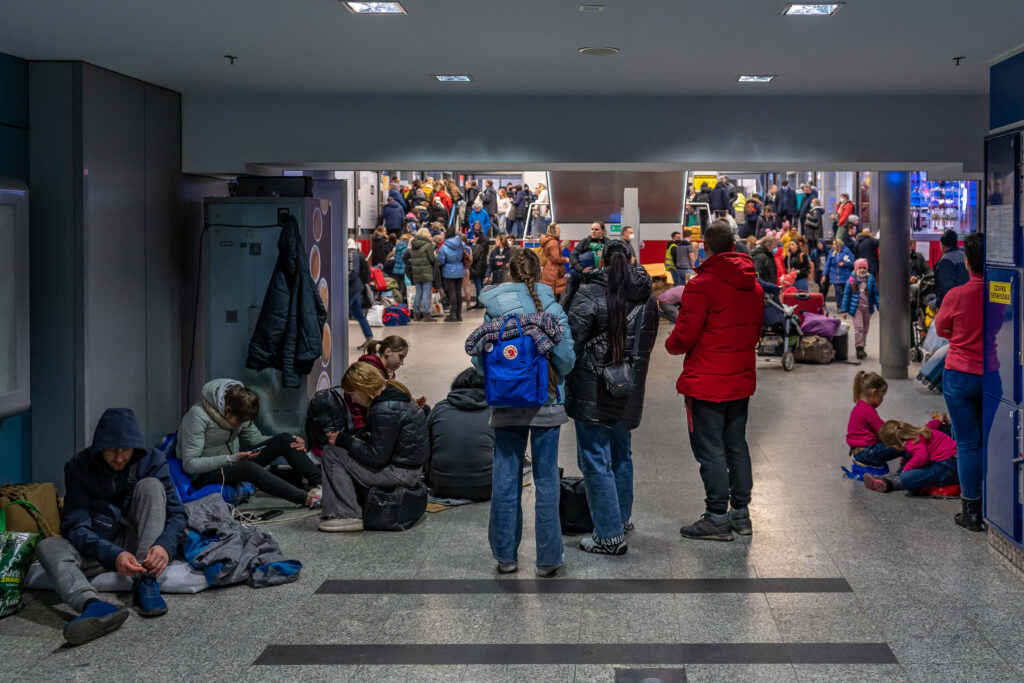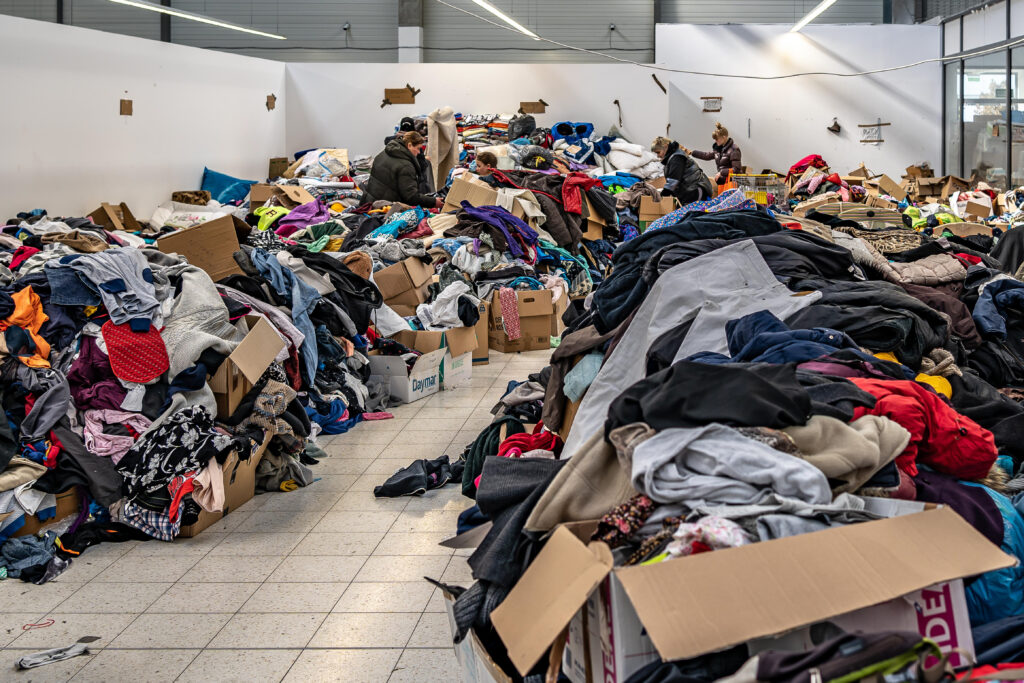We have arrived in the Czech Republic,” Ivan writes to me on Telegram at 9:00 p.m. on March 17, and at that moment I feel a sense of relief and happiness. More than a day after we greeted each other, he and his family made it to his grandmother’s house in Prague.
Ivan was the first person I met in Medyka, the Polish city that serves as the main entry point for Ukrainian refugees in Poland. This is where the vast majority of those fleeing Putin’s bombs pass.
When I enter the tent set up a few meters after the border, he approaches me, attracted by my camera. Ivan is a lover of photography and as soon as we started talking, he opens the small backpack with the few things he could take with him when he was forced to flee, to show me his camera and his lenses. He is 14 years old and until a few days ago he lived in Dnipro with his 20-year-old sister Alice, his 40-year-old mother Katerina and his nine-year-old younger brother Misha, bedridden by a plaster bust due to a spinal injury.
When Russian troops began shelling the city, they were forced to flee for safety, taking more than two days to travel the roughly 1,000 kilometers from their city to the Polish border. The father stayed to fight and for a few days, they have not been able to communicate with him.
At the Medyka border, there are thousands of stories like that of Ivan and his family: mothers and young children fleeing the atrocities of war, leaving behind their husbands, fathers or older brothers who are prohibited by martial law from leaving the country.
The lucky ones, those who have a relative in a European country, will be able to go to where their loved ones live. The others will have to reinvent a new life in a country completely unknown to them.
UNHCR estimates that since the start of the conflict, at least 3.2 million people have left Ukraine and at least two million have made their way to Poland through the Medyka, Korczowa and Kroscienko borders in what is considered one of the largest and fastest exodus of refugees in history.
However, this gigantic humanitarian crisis of people has triggered an enormous mobilization of civil society: volunteers, associations, NGOs and ordinary citizens, wanting to help, flocked to the border, giving rise to an unprecedented spontaneous movement of aid.
The small driveway that goes from the customs exit to the bus stop is full of dozens and dozens of stands and tents with all kinds of materials that can help people who have been traveling for days: food, clothing, blankets, medicines, toys, pet food, drinks, and accessories for intimate hygiene.
If you try to detach yourself from the tragedy of this moment and focus only on what is presented in front of your eyes, the image almost seems that of a small festival: there are food trucks, bonfires, stands, colored lights. All this creates an almost surreal atmosphere that contrasts with the dramatic situation that these people are experiencing.
As soon as the refugees cross the border, they are greeted by volunteers who approach them, offering blankets and hot food. The neediest are helped by the Polish military, who take care of their heavy suitcases or help disabled people who arrive in wheelchairs. Volunteers hand out stuffed animals, candies and smiles to young children to try to make the drama they are experiencing more bearable, at least for a moment.
These two hundred meters that separate the border crossing from the bus stop are a kind of limbo between their past life and the uncertain future that awaits them once they arrive at the Przymsyl refugee center.
This town, about 15 km from Medyka, is the main reception and reception point: trains from all over Ukraine arrive and depart from the station. The buses that leave the border also arrive here transporting people to the old Tesco shopping center in which a huge refugee camp has been set up to house thousands of women and children. The shops have been completely emptied and now house dozens and dozens of cots. Each one represents a destination: Germany, Spain, Italy, Finland, etc. and in each one there are volunteers from these countries who try to help, talk to the people and understand their needs and desires.
Refugees arriving here must register and indicate where they want to go so that transfers can be arranged. Normally, people should not stay more than three nights. In theory. In practice, it depends a lot on the destination and the availability of means of transport. The lucky ones can sometimes leave on the same day, while others have to stay even a week in the center, waiting to know where they can go. Volunteers and “drivers” must also register and receive an identification bracelet in order to help because there have been cases of jackals taking advantage of the desperation and vulnerability that this situation entails. Human traffickers have targeted unaccompanied children and young women, and there have been several cases of mothers being offered a ticket and then kidnapped to force them into prostitution. For this reason, now in Poland there are soldiers of the foreign legion, mixed in among the crowd of volunteers, who control the border to prevent these deplorable episodes from continuing to occur.
At Tesco and other refugee centers also arrive donations from all over Europe. The warehouses are literally flooded with boxes and pallets with all the basic necessities and trucks and vans continue to arrive every day loaded with merchandise that the volunteers do not have time to organize and catalog. The amount of aid received is exceeding the real needs, but also the ability of the associations to be able to make the most of these donations or send them to Ukraine. Especially when it comes to clothing, the Polish-Ukrainian border “is becoming the textile dump of Europe,” Soraja, a volunteer for a Basque NGO who works in Hala Kijowska, the other large refugee center near the border, tells me. Many people, thinking of making a noble gesture, donate clothes they no longer wear and clothes that are no longer in good condition, which end up piled up in huge mountains outside these malls or dumped in the middle of a field near the border. For the volunteers, it is impossible to separate the good clothes from the ones that have to be thrown away, to divide the enormous number of dresses by size or to group the thousands of shoes by number. For people who need it, looking for two shoes in their size in the middle of this mountain is like looking for a needle in a haystack. “The warehouse is full and all this merchandise that has just arrived will stay outside here, perhaps for days,” Soraja tells me, “let’s hope it doesn’t snow like last week, otherwise we’ll have to throw all this away.”
Despite the difficulties, it is still clear that without the help of ordinary people, who came at their expense, to Poland to deal with this emergency, it would not be possible to manage this huge flow of people and goods. This spontaneous movement of people willing to help is perhaps the only positive note in this tragic situation. It is thanks to people like Anna, a twenty-four-year-old scout from Warsaw who distributed basic necessities at the Medyka border, Valentino, a trader who came from Sardinia to coordinate aid for the Tesco center, or Matt, an American cook from World Central Kitchen that it is possible to face this humanitarian emergency.
